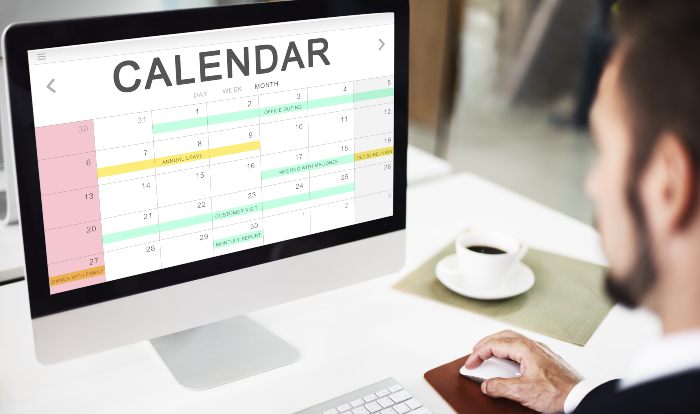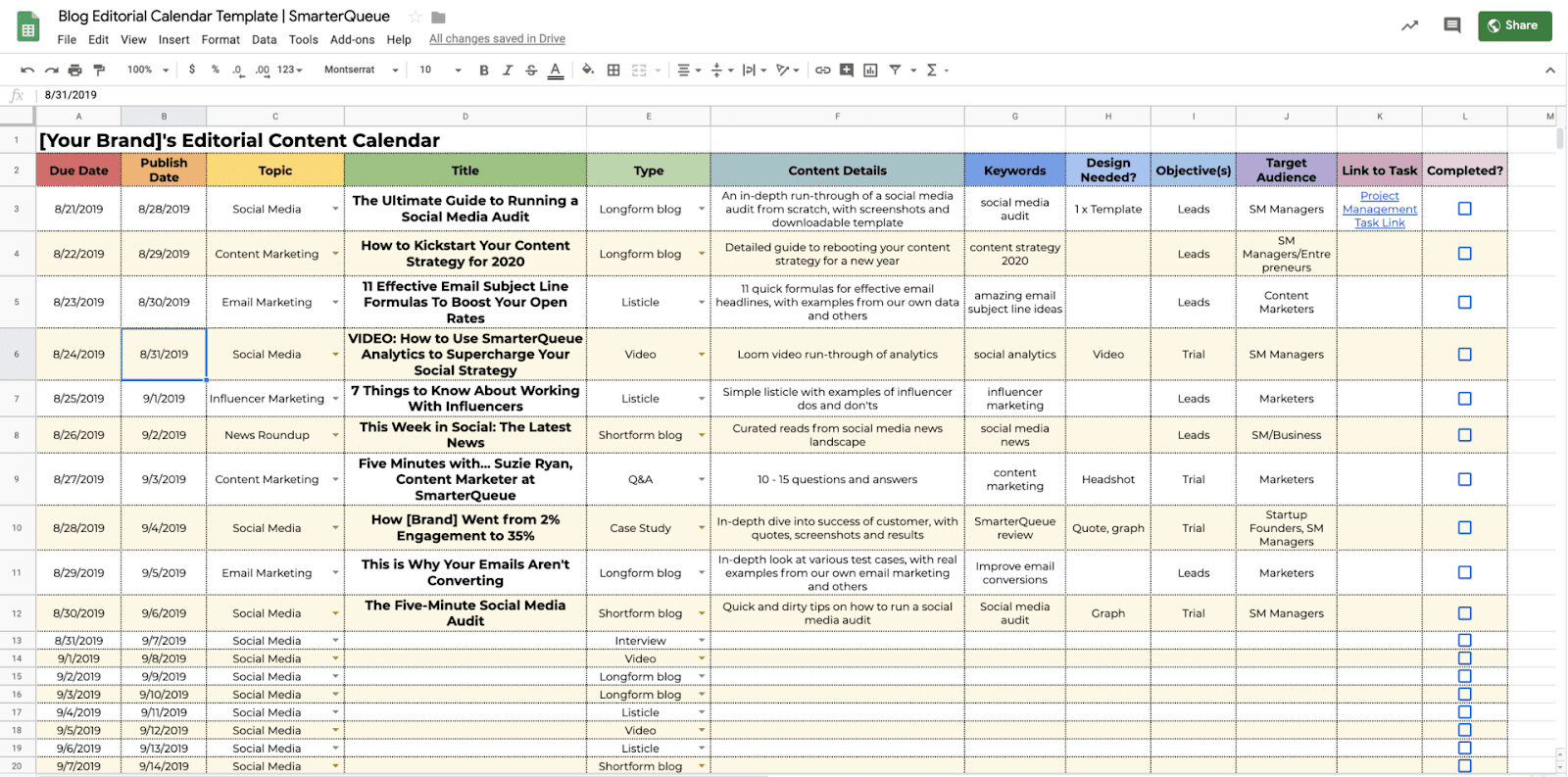How to Make an Editorial Calendar (and Stick to It!)
Planning is an essential task in every content marketing strategy, with your editorial calendar being a critical part of organizing it. What is a content calendar? It’s a schedule of the content you’re going to produce and publish on a blog or website. While you can also apply it to other distribution channels like your social media accounts and email marketing newsletters, their focus is on blog posts.
Besides helping us plan the content we want to produce, an editorial content calendar is a handy guide while tackling various aspects of creating and publishing articles. What are they? Let’s take a closer look.
Why should you use an editorial calendar?
Some of the compelling reasons for creating an editorial calendar template for your organization are to help you:
-
Get to know the needs of your target audience.
-
Offer quality content.
-
Drive attention to your business objectives.
-
Craft a content strategy while focusing on your audience.
-
Help you develop your editorial strategy.
-
Attract your ideal customer without being invasive or intrusive.
-
Help you focus on boosting your conversions.
-
Help you manage your time and be more productive.
-
Organize the way you curate and create content.
-
Optimize and improve the resources you have at your disposal.
-
Have a long-term vision in line with your established goals.
-
Optimize the ideas you have.
-
Readapt and make the most of the content you create.
-
Publish according to the audience you are addressing at each moment.

Having a content calendar helps us gain a single view of all our scheduled posts while ensuring consistent, balanced content production. It also serves as a “self-generator of ideas” as it assists you in developing strategic thinking.
Features of a good content calendar
An appropriate editorial calendar:
-
Provides all the information we need when creating the content: format, author, dates, etc.
-
Visually classifies the different content formats you have.
-
Contains all the information for your 360º marketing strategy and is legible.
It should reflect who’s in charge of writing, publishing, and promoting each piece of content.
How to design an editorial calendar
Having a blog is one of the best ways to attract visitors to your website who become leads. The data doesn’t lie: 53% of marketing experts think that blog is their priority in their content marketing strategy. And you can expect 67% more leads if your brand has a blog, compared to those who don’t.
When it comes to driving web traffic, creating new indexed pages is a signal to Google, and other search engines that your website is active and they should check it frequently. And each entry is an opportunity for positioning in those search engines, which converts into more traffic for your website.
If you want your content calendar to be useful, you must start by including all the variables that can affect the creation and publication of the contents. These include who you’re addressing, the goals you want to achieve, the topics you want to cover, and the content formats you want to create. The main fields would be these:
-
Buyer Persona: Identify your target audience, and they should serve as the basis for the texts you write to attract them to your site. Knowing your Buyer Persona in-depth and adapting your writing to these people will bring you closer to reaching the heart of your potential customers.
-
Funnel Stage: As your users pass through the purchase cycle to conversion, this field highlights the stage you’re in (TOFU → MOFU → BOFU). If you know what you need at each moment, you can publish what you are looking for and get more traffic to the website. Having a well-defined buyer journey will help us a lot in this sense.
-
Campaign: What’s the objective you’re pursuing? If you want to position yourself for a specific service or product, you should include it in the editorial calendar, so the editor knows where you will direct your efforts.
-
Keywords: User search trends on search engines mark your content’s positioning. Proper keyword research is an essential tool that will help us have your content appear at the top of search queries based on search volume, trends, and more.
-
Internal and external links: Link-building supports your web positioning strategy and is a technique to get users to arrive at one of your blog posts and keep browsing the rest of your site and seek out more content. Include a list of internal and external links related to your post’s main topic while offering relevant information.
-
CTA: Include a Call-To-Action that takes the reader to a specific landing page related to the product or service you’re highlighting in your piece of content. It’s a direct and non-intrusive way for them to know better what you offer and bring it a little closer to the conversion.
-
Content format: We can decide to place our bets on a content format depending on the subject matter and the stage of the funnel our buyer is. They can include lists, Q&A, informational posts, tips, infographics, or even videos if you add video marketing into the equation. Users appreciate a variety of formats.
-
Suggested title: Keywords are decisive in creating a title, but the author indeed gains a global view of the topic while producing the piece. Therefore, we have to keep an open mind about improving the title.
-
Author: Your team undoubtedly has a variety of people who specialize in different disciplines. We recommend that you assign the byline to someone according to the topics you’re covering or have them be experts that guide your content writers in developing the content.
Sample templates for your blog's editorial calendar
You have a plethora of tools with social media and blog editorial calendar template options that you can use as a baseline when starting to develop your content calendar for 2021 and beyond. Remember that you can customize them later on to meet your organization and audience’s needs. Whether you opt for a hard copy, online calendar, or plugins with platforms like WordPress, choose the format that best suits your organization and team’s dynamics. Here are some examples of content calendars:


If you already don’t have an editorial calendar template to start using in 2021 for your blog and social media, explore the possibilities with all the tools at your disposal!
Subscribe to our newsletter and stay up to date with the latest digital trends.
Subscribe to our newsletter and stay up to date with the latest digital trends.
No thanks. My inbox is fine as it is.